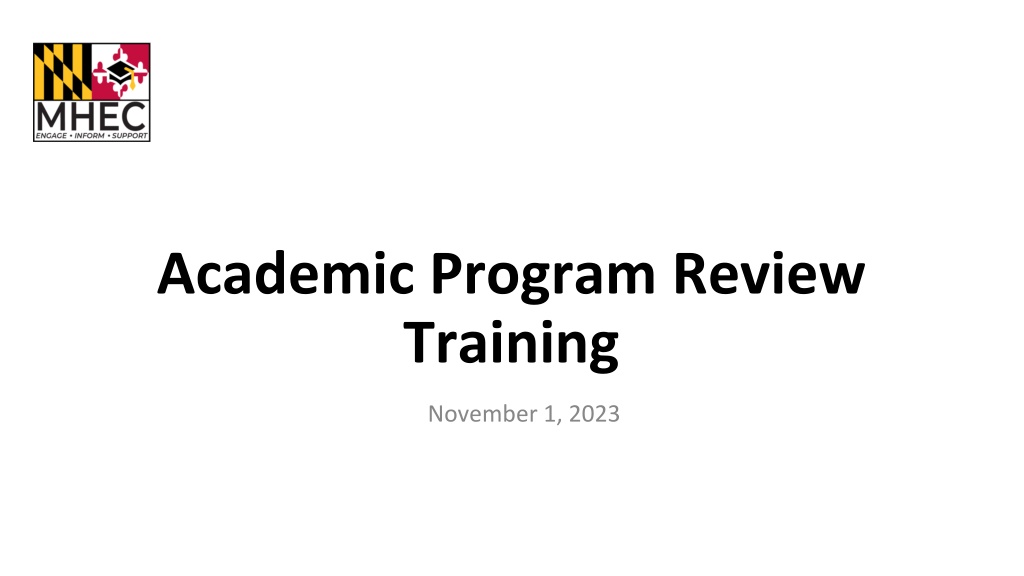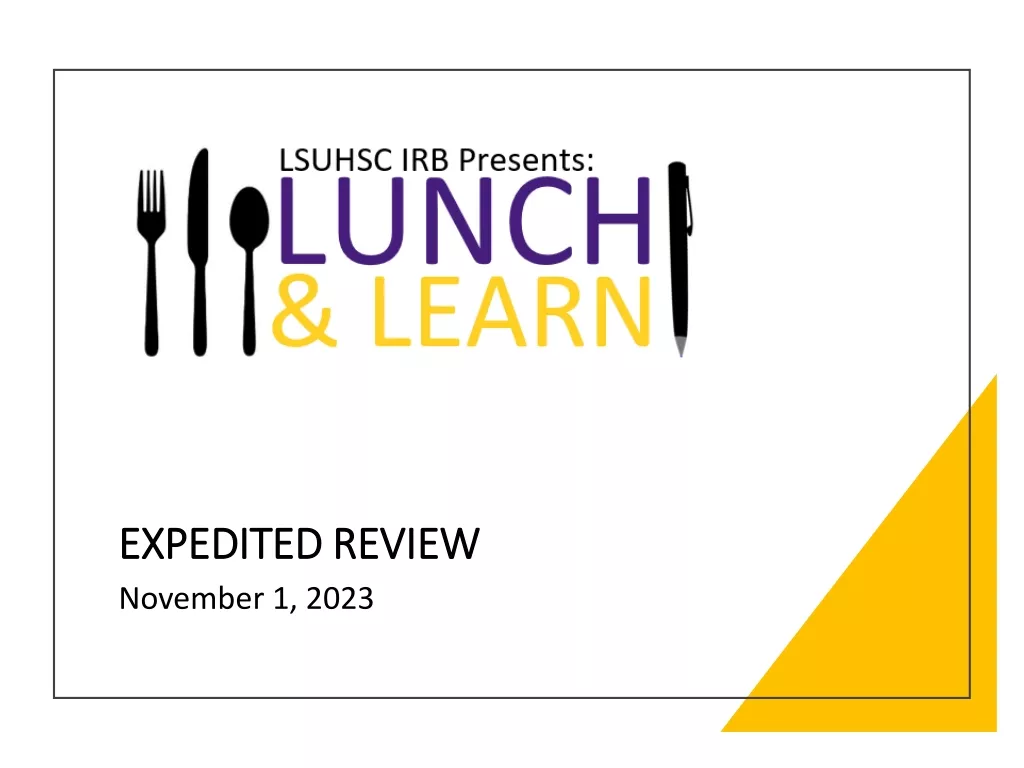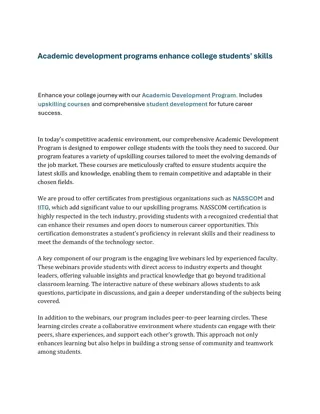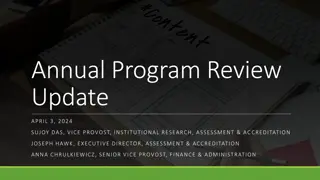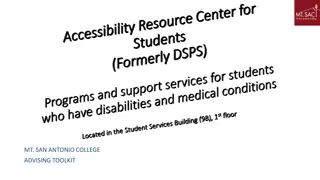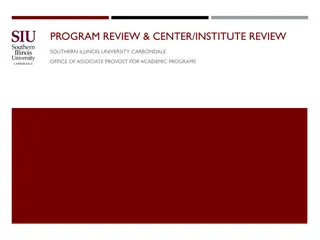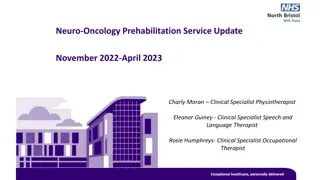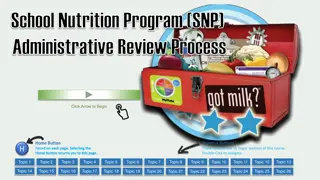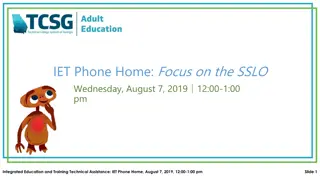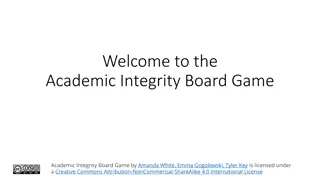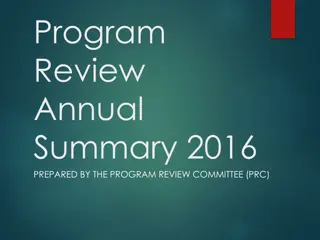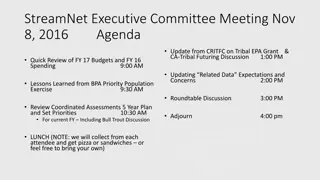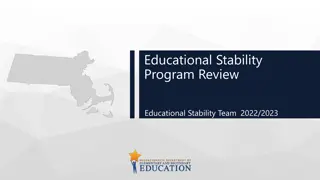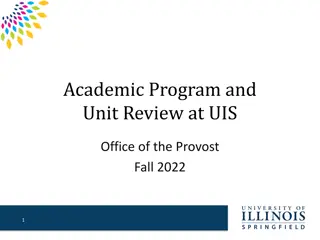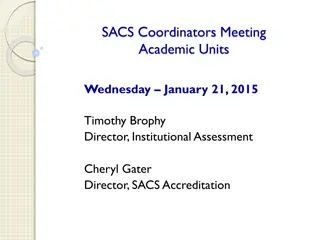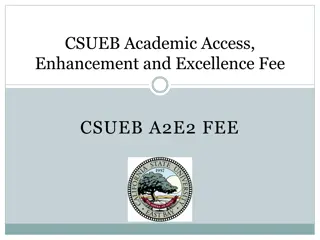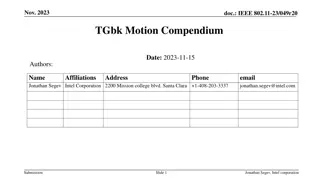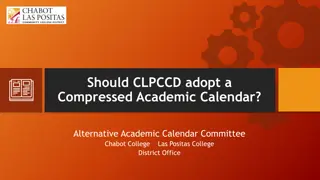Academic Program Review Training Highlights - Nov 1, 2023
The Academic Program Review Training held on November 1, 2023, covered various important topics including updates on program reviews, modality considerations, suspensions and discontinuations, completeness checks, HEGIS and CIP code training. Insightful presentations were given by experts in the field to assist attendees in navigating through these key aspects of program evaluation and management.
Download Presentation

Please find below an Image/Link to download the presentation.
The content on the website is provided AS IS for your information and personal use only. It may not be sold, licensed, or shared on other websites without obtaining consent from the author.If you encounter any issues during the download, it is possible that the publisher has removed the file from their server.
You are allowed to download the files provided on this website for personal or commercial use, subject to the condition that they are used lawfully. All files are the property of their respective owners.
The content on the website is provided AS IS for your information and personal use only. It may not be sold, licensed, or shared on other websites without obtaining consent from the author.
E N D
Presentation Transcript
Academic Program Review Training November 1, 2023
Agenda 1. Welcoming Remarks Assistant Secretary Dr. Emily Dow Program Review Updates Associate Director of Academic Program Review Dr. Lyndsay Silva Modality Suspensions and Discontinuations Completeness Check HEGIS and CIP Code Review Director of Reporting Services Dr. Ann Kellogg Prison Programs Associate Director of Academic Program Review Dr. Lyndsay Silva BREAK 10 min 5. Payment Process Information Administrative Officer Victoria Johnson 6. Academic Common Market Education Policy Analyst Allie Edelstein 7. Articulation Agreements Education Policy Analyst Brittany Martin 2. 8. Biannual Reporting Overview Education Policy Analyst Shayla Hunter 9. Active Assailant Workgroup Education Policy Analyst Rose Robinson 3. 10. MHEC Academic Program Resources, Proposal Process Outline Senior Education Policy Analysts Bryson Barksdale and Glenda Abney 4. 11. Objections 2 Assistant Secretary Dr. Emily Dow
Program Review: Updates Modality Fully online If a student signs up for a fully-online class they will never be expected to come to campus for anything other than orientation, testing etc. On-campus - we do not have a specific percentage of online courses that takes it over to an online program requiring approval The program though cannot be made 100% online and students should have a good balance of face-to-face and on-campus courses as they signed up for an on-campus program. Dual or Both Students have the option to complete the program fully online OR on-campus
Program Review: Updates Suspensions and Discontinuations If students are still enrolled in the program and it is discontinued this will cause you to have an error in reporting to the agency Please suspend the program until all students have been taught out OR put an implantation date on the cover-sheet far enough in the future that all students will have been taught out This will require regulatory change to COMAR 13B.02.03.03 (I)
Program Review: Updates Completeness Check Analyzing program duplication in the state analysts use the API, and our Enrollment Reports to check for similar programs We search by CIP code and title within the same degree level Starting December 1: if the analyst sees a possibility of duplication not addressed in the proposal it will be considered insufficient and sent back for correction
HEGIS and CIP Code Training Ann T. Kellogg, Ph.D. Director of Reporting Services, November 1, 2023 MHEC/MLDS
Agenda 1. HEGIS and CIP Codes Definitions 2. HEGIS and CIP Codes 3. HEGIS and CIP Codes in Research 4. HEGIS and CIP Code Selection Tools
Higher Education General Information Survey (HEGIS) Series What is HEGIS? Survey initiated by Department of Education in 1960 to collect data on postsecondary education, including enrollments and completions. HEGIS surveys used discipline codes to collect data on enrollments and completions using the following coding scheme: Discipline Divisions 0100 through 4900 should be used to classify baccalaureate and graduate programs. Discipline Divisions 5000 through 5600 should be used to classify Associate degree programs and undergraduate certificates. HEGIS surveys were retired in the 1980s and replaced with the Integrated Postsecondary Education Data System (IPEDS) surveys. The Discipline Codes were replaced by the Classification of Instructional Programs Codes or CIP Codes. CIP Codes are updated every 10 years by NCES.
Classification of Instructional Programs (CIP Codes) What is a CIP Code? Classification of Instructional Programs coding scheme replaced discipline codes in 1980 when National Center for Education Statistics (NCES) discontinued HEGIS surveys and launch Integrated Postsecondary Education Data System (IPEDS) surveys. CIP Codes have been revised in 1985, 1990, 2000, 2010 and 2020. CIP Codes have three tier levels: two-digit, four-digit, and six-digit Two-digit: Broad academic disciplines Four-digit: Sub-discipline Six-digit: Specific majors or programs used for IPEDS reporting
Higher Education General Information Survey (HEGIS) Series MHEC uses a modified version of HEGIS Discipline Divisions to isolate degrees offered at four-year institutions from degrees offered at community colleges and to separate community college transfer degrees from community college career degrees. How does MHEC use HEGIS? Enrollments and completions are reported under the MHEC HEGIS Discipline Divisions: Discipline 0100 through 2399 should be used for baccalaureate and graduate programs. There are a few documented exceptions. Discipline 4901 to 4999 should be used for degrees at community colleges that have the primary intent to transfer. Discipline 5001 through 5699 should be used for degrees at community colleges that have the primary intent to enter the labor market.
Academic Program Proposal (New or Modification) Four-Year Public, State- Aided Independent or Private Community College Lower Division Certificate Associate s Degree All Degrees Transfer Degree (Including ASE & AAT) Select HEGIS Code between 5001 and 5600 Career Degree Select HEGIS Code between 0100 and 2399 Select HEGIS Code between 5001 and 5600 Select HEGIS Code between 4901 and 4999 Codes 1101, 1102, 1103, 1104, 1105, 1106, 1107, 1108, 1109, 1112, 1199 may (currently) be used for Community Colleges. Code 4900 may (currently) be used for University of Maryland Global Campus upper division certificates (degree sought=30). 9099 is a placeholder for undeclared students, it should never be assigned as a code in a program.
HEGIS and CIP Codes in Research Research Reports College X: PARALEGAL STUDIES HEGIS 559901 & CIP Code: 220302 Analysis by Specific Codes and Categories Predefined Agency Reports 2013 2014 2015 2016 2017 2018 2019 2020 2021 2022 Total 139 146 130 106 90 79 79 94 82 63 Shifts in Coding, Shifts Result MHEC Standing Reports Trends in Fall Enrollment by Program Trends in Degrees and Certificates By Program Low Productivity Report
Research Example: Actual Recommend Assigned HEGIS 0834XX 0808XX 0808XX 1902XX Assigned HEGIS 080100 080100 080800 190200 Assigned CIP 13.0101 13.0101 13.0101 40.0801 Assigned CIP 13.1338 13.1001 13.1001 40.0801 IHE College A College A University B University B Program Name Environmental Science Special Education Special Education Physics non-teaching major University B Physics teaching 190200 12.1205 0834XX 13.1329 How many teacher are produced each year? Who is teaching at the grade level or in the subject area of their training?
Assigning HEGIS and CIP Codes - Forthcoming Tools Crosswalk of HEGIS Discipline Codes to CIP Codes Requires MHEC decisions around academic disciplines (for example, STEM) Analysis of missing HEGIS Discipline Codes Should currently omitted codes be added to the coding scheme? Analysis of HEGIS Discipline Codes added that are not original to the discipline coding scheme Should MHEC continue to use codes that were never part of the HEGIS discipline coding structure?
Prison Education Programs (PEP) Effective July 1, 2023, the U.S. Department of Education extended the Pell Grant eligibility to confined or incarcerated individuals who enroll in qualifying PEPs. All two and four year degree granting institutions wishing to provide programs and courses for Prison Education Programs (PEPs) in Department of Correction facilities must comply with the federal PEP requirements as required by the federal regulatory language for the use of Pell Grants.
PEP ACADEMIC APPROVAL PROCESS 1. DPSCS Initial Proposal: Contact Danielle Cox, DPSCS Director of Education Propose programs to be offered behind the fence in order to get initial written approval to proceed with MHEC approval. Proposed program will demonstrate the ability to comply with the federal PEP requirements as required by the federal regulatory language for use of Pell Grants. 2. MHEC Approval: Contact Trish Gordon McCown, Director of Academic Affairs Institutions must submit a cover sheet and non-substantial modification proposal to obtain approval of the PEP academic program.
PEP ACADEMIC APPROVAL PROCESS 3. DPSCS Formal Review - The Maryland Higher Education in CorrectionsAdvisory Committee (MHECAC) Evaluation: MHECAC will evaluate each proposal that passes initial review. The committee will meet quarterly to collectively review each proposal and discuss any requests for additional information and/or programmatic changes. Conditional Recommendation for Approval: The committee s recommendation for approval is submitted to the Secretary of DPSCS (or designee) for final approval. Final Approval: The DPSCS Secretary will make the final decision based on the committee s recommendation. Once final approval is received from the DPSCS Secretary, the proposal will move into the MOU process. The DPSCS Director of Education will work with the postsecondary institution to draft the MOU. Once the MOU is signed and finalized, the Institution must receive accreditation approval.
PEP ACADEMIC APPROVAL PROCESS 4. Accreditation Approval of PEP Program Institutions must obtain approval from their accrediting body. Once approval has been received from DPSCS, MHEC and the accreditor, the institution will seek approval from the USDOE. 5. U.S. Department of Education Institutions must obtain approval and return all approvals to DPSCS for final approval of the program and MOU.
Institutional Program Payment Process Your proposal review process begins with a complete proposal packet submission. This packet should include in the following order: Signed President s letter on intuition letterhead. Completed MHEC cover sheet Program proposal Please note: These documents should be submitted as a single pdf file for each proposal you are submitting. I would advise that if you have multiple proposals that you are submitting that you submit all your proposals in one email so that you will receive a confirmation email for all proposals you submit. API updates: I update the API twice a month, normally around the 1st and the 15th of each month. This timeframe really depends on when I receive signed final decision letters and is subject to change.
Payment Methods MHEC does not accept credit card payments at this time. Checks should be made payable to the Maryland Higher Education Commission and sent to the attention of Ms. Victoria Johnson and/or Patricia Francis at: Maryland Higher Education Commission 6 North Liberty Street Baltimore Maryland, 21201 RSTAR transfer information is as follows: Agency Number: R62 PCA Number: 01423 AOBJ Number: 6657 Transaction code: 410 *Please note: A complete RSTAR number will typically begin with letters followed by numbers. Examples of RSTAR numbers: JE313068, JCMSU000
Withdrawal/Refunds Proposal withdrawals When an institution chooses to withdraw a proposal they should do the following: Submit a request to withdraw the proposal on institution letterhead, signed by the appropriate officiant Include in this letter whether you would like to have the fees associated with the withdrawn proposal refunded or if you would like them to be held for a future submission Please note: MHEC will only hold fees for 30 days before they are automatically processed for a refund to the institution Refund process Withdrawal letter received by the institution I will process the refund and submit for review/signature by Dr. Dow (normally within 1 week of request) Dr. Dow s signature is received the refund packet is submitted to our finance department to process MHEC Finance department completes their process and it is forwarded to Annapolis for final processing/release of funds Please note: IF an institution wishes to use fees for a future proposal (within 30 days) they should reference the same RSTAR/Check number they used when submitting the initial proposal for tracking purposes
Academic Common Market (ACM) The Academic Common Market (ACM) is a tuition-savings program for students who want to pursue degrees not offered by public institutions in their home state. Fifteen states participate in the ACM, which is overseen by the Southern Regional Education Board (SREB). A student who is certified for the ACM can attend an institution in another state and pay in-state tuition (as if they were residents of that state). Students can check which programs are eligible for the ACM on the SREB website: https://www.sreb.org/search-programs MHEC responsibilities: Process student applications via OneStop by verifying the student s residency and generating the ACM certificate to distribute to the student and the university Perform annual duplication analyses of the programs in the ACM Inventory (ACMI) to ensure there are no programs that are duplicative of in-state programs Programs that are 51% or more similar (based on curriculum) are removed from the ACM; as new programs are created in Maryland, MHEC regularly evaluates the ACMI to ensure there is no duplication In the past year, 11 programs were removed from the ACMI and 8 were added Communicate with parents, students, and the public to explain ACM policies and procedures Analyze Requests for Access to determine whether new programs can be added to the ACMI Liaise with SREB and external partners in other states to stay apprised of updates and convey information Assist in-state institutions with process questions and facilitate communication between stakeholders
Academic Common Market (ACM) Per SREB data from the 2022-2023 academic year, Maryland is an exporter state with 316 residents exported and only 15 imported. With the recent removal of duplicative programs, the number of exported students should significantly decrease. There is also an opportunity for participating Maryland institutions to increase imported students via the creation of new academic programs that are in demand.
Academic Common Market (ACM) Students can submit Requests for Access if they are admitted to a program that they think is unique at a participating school. MHEC does a duplication analysis to determine whether the program is unique. Some recently approved programs include: Cancer Biology, B.S. (University of Alabama at Birmingham) Product Design, B.S. (University of Kentucky) Maritime Supply Chain Management, B.S.B.A. (Old Dominion University) Appalachian Studies, B.A./B.S. (Shepherd University) Popular ACM undergraduate majors that students leave Maryland for (excluding recently removed programs): Intelligence and Security Studies Risk Management and Insurance Political Communication Mining Engineering Therapeutic Recreation Equine Science and Management American Sign Language and Interpreting Cardiovascular Technology Popular ACM institutions: University of South Carolina; Coastal Carolina University (SC) Norfolk State University; Old Dominion University (VA) Louisiana State University (LA) Middle Tennessee State University (TN) Shepherd University (WV)
Articulation Agreements Which proposals should include articulation agreements? New Bachelor s New AoCs Sub- Mod to Existing Bachelor s Sub-Mod to Existing Associate s Sub- Mod to AoCs PUBLIC INSTITUTIONS ONLY Articulation Agreement- COMAR Regulation
Articulation Agreements: Process Notes Articulation Agreement (AA) received by MHEC Institution must submit appropriate proposal cover letter and non-substantial modification cover sheet (for those non-specific to proposals) AA attached to Proposals should have information in Section H and are often attached as an Appendix Brittany will review the Articulation Agreement for completeness Use the checklist as a guide Review within 10-day period and determine if insufficient or clarification is needed Full signed copy of the AA is due within 30 after the decision letter is sent for the program
What should be within the AA? Statement regarding the articulation agreement between sending institution and receiving institution. What student qualifies for eligibility of agreement? Program Transfer Agreement Information Clear indication of the credits the Receiving Institution will accept towards completion of the program Sending Institution courses alongside the Receiving Institution course and the credits transferred (chart included) Credit totals accurate? Course Sequence Suggestion included? Transfer Coordinator listed for Sending and Receiving Institutions? Expiration Date of Agreement provided? When will both institutions meet to review the terms of the agreement? Date provided with signatures from both institutions? Minimum grade requirement accepted for transfer? Any additional degree requirements that must be completed at the sending institution? Special Requirements? Receiving institution accepting prior learning credits from sending institution? AA signed?
Biannual Reporting Program Review June 30, 2023 October 1, 2023 25 January 1, 2023 June 30, 2023 30 July 1, 2022 December 31, 2022 44 New Degree Programs New Certificate Programs New Areas of Concentration Substantial Modifications Non-substantial Modifications Programs Objected to 8 11 27 12 4 8 6 8 6 60 64 167 4 3 2
Biannual Reporting Program Review MHEC reports are completed biannually on received proposals The column in green is the unfinished report from the proposals received this year New certificate programs figure represents both standalone and certificates within existing programs Non-substantial modifications figure includes all proposal types listed on the non-sub. Cover sheet
Maryland Active Assailant Interdisciplinary Work Group (AAIWG) The Maryland Active Assailant Interdisciplinary Work Group is a group of subject matter experts whose purpose is to identify, update, and share best practices and current activities to help Maryland prevent, prepare for, respond to, and recover from active assailant incidents. AAIWG membership also includes representatives from the Maryland State Department of Education, Maryland Higher Education Commission, and Maryland Center for School Safety.
AAIWG Contacts and Useful Links The Center for Prevention Programs and Partnerships (CP3), the lead prevention program in the Department of Homeland Security (DHS) has a grant program to which academic institutions and state/local governments are eligible to apply. For information on grant availability and awards: https://www.dhs.gov/news/2023/09/06/dhs-awards-20-million-34- organizations-effort-prevent-targeted-violence-and AAIWG university and college resource page can be found at (https://aaiwg.maryland.gov/)
MHEC Resources MHEC.maryland.gov About MHEC at Top of Page MHEC Resources Drop-down Left-hand Side of Page Program Review Academic Program Inventory: This site provides the complete inventory of academic programs recognized by the Maryland Higher Education Commission. New Academic Programs Under Review: Full list of circulating program proposals and 30-day deadlines for comment and objection. Objection Process and Requirements: Guidance regarding objections for in-state academic program review. Academic Approval Process Guidelines for Academic Program Proposals: Cover sheets, proposal templates, instructions on how and when to submit proposals, and the guiding regulations. Fee Schedule: Full list of fees as per proposal type.
Proposal and Payment Received by MHEC: Accepted: 1st and 15th of each month If proposal is deemed INCOMPLETE Proposal reviewed by an analyst for completeness within 10-days per COMAR 13B.02.03.27 If proposal is deemed COMPLETE The proposal is CIRCULATED via email and posted on our website. Analyst emails institutional contact and works with them to resolve deficiencies. 30-day deadline for comments and objections set at time of circulation. A 10-day deadline is given for response. 10-day review resets once corrected proposal is received. Full analysis completed by analyst within ~10 days of circulation ending. Recommendation is made to the Secretary. If the institutional contact is non-responsive then the Chief Academic Officer will be included on the 3rd notice. Secretary issues a final decision. Decision letter sent to the President of the University, and institutional contacts listed on the proposal.
Implementation Date Calendar FALL Approximate Start ~Sept 1 = implementation date for Fall stop accepting with July 1 submissions SPRING Approximate Start ~January 24 = implementation date for Spring stop with December 1 submissions SUMMER Approximate Start ~ May 28 = implementation date for Summer stop accepting with April 1 submissions
Cover Sheet Overview Total Number of Credits must reflect total graduation credits. Ex. 120 for a Bachelor s Degree SUGGESTED Codes. We perform an analysis and have a conversation with the institutional contact Implementation date must be at least 60- days from submission
Program Review Discussion Topics Non-substantial vs. Substantial Modifications Reasonableness of Program Duplication Relevance to High-demand Programs at Historically Black Institutions (HBIs) Relevance to the Identity of Historically Black Institutions (HBIs) Adequacy of Faculty Resources Adequacy of Financial Resources with Documentation
Substantial and Non-Substantial Program Modifications Substantial Modification Non-Substantial Modification Non-substantial modifications are considered: any credit change to the total program requirement credits (excluding general education requirements for bachelor s and associate s degrees) that is 33% or less of the total program credits. An institution shall submit a program proposal for a substantial modification to: (1) Change more than 33 percent of an existing program s course work; (2) Offer an existing program as an off-campus program; Institutions should submit the non-substantial modification cover sheet accompanied with a letter of notification that describes and provides a justification(rationale) for the proposed change, along with supporting and/or comparative documentation (i.e. course outlines, course descriptions) from the existing and proposed programs. (3) Establish a new area of concentration within an existing program (4) Establish a new program title within an approved program 42 COMAR 13B.02.03.02-1 COMAR 13B.02.03.03.E
MHEC Program Modification Chart OLD Program Requirements Credits Removed, Changed, or Added NEW Program Requirements Credits Total OLD Program Requirements Total NEW Program Requirements
33% Threshold Calculation -Count the credits for each course changed,addedor removed from the program requirements. -If free electives or restrictive are added or removed these changes are not counted toward the 33% calculation EXCEPT when the total required free or restrive elective credits change. -If the institution presents something as a replaced course then you count the credits for the old course (removed) and the credits for the course that is replacing it (added). For example: A proposed program has 45 total credits in the program requirements and restrictive electives: 33% of 45 credits = 14.85. (we round this up to a 15 credit change). So, if 15 credits or less of the total program requirements and restrictive electives as applicable are changed and the total credits for any free electives remains the same then, it would be considered a non-substantial program modification. If more than 15 credits are changed (calculated as explained above) then it is a substantial program modification and the institution must re-submit the request as a full program proposal with circulation.
Reasonableness of Program Duplication 1. Identify similar programs in the State and/or same geographical area. Discuss similarities and differences between the proposed program and others in the same degree to be awarded. 2. Provide justification for the proposed program. Must address: (C)(2)(g) Educational justification for the dual operation of programs broadly similar to unique or high-demand programs at HBIs. COMAR 13B.02.03.09
Relevance to High-demand and Unique Programs at Historically Black Institutions (HBIs) 1. This item is found in Section E of the Academic Program Proposal template. 2. Discuss the program s potential impact on the implementation or maintenance of high-demand and unique programs at HBI s. 3. This section refers to the program s potential impact on HBIs. 4. Please respond. Do not use N/A or leave blank. COMAR 13B.02.03.06
Relevance to the Identity of Historically Black Institutions (HBIs) 1. This item is found in Section F of the Academic Program Proposal template. 2. Discuss the program s potential impact on the uniqueness and institutional identities and missions of HBIs. 3. This section refers to institutional identities and the potential impact on HBIs. 4. Please respond. Do not use N/A or leave blank. COMAR 13B.02.03.06
Adequacy of Faculty Resources 1. Provide a brief narrative demonstrating the quality of program faculty. Include a summary list of faculty with appointment type, terminal degree title and field, academic title/rank, status (full-time, part-time, adjunct) and the course(s) each faculty member will teach in the proposed program. 2. Demonstrate how the institution will provide ongoing pedagogy training for faculty in evidenced-based best practices, including training in: a) Pedagogy that meets the needs of the students b) The learning management system c) Evidenced-based best practices for distance education, if distance education is offered COMAR 13B.02.03.11 and COMAR 13B.02.02.17
Adequacy of Financial Resources with Documentation 1. Complete Table 1: Resources and Narrative Rationale. Provide finance data for the first five years of program implementation. Enter figures into each cell and provide a total for each year. Also, provide a narrative rationale for each resource category. If resources have been or will be reallocated to support the proposed program, briefly discuss the sources of those funds. 2. Complete Table 2: Program Expenditures and Narrative Rationale . Provide finance data for the first five years of program implementation. Enter figures into each cell and provide a total for each year. Also, provide a narrative rationale for each expenditure category. COMAR 13B.02.03.14 and COMAR 13B.02.02.21
